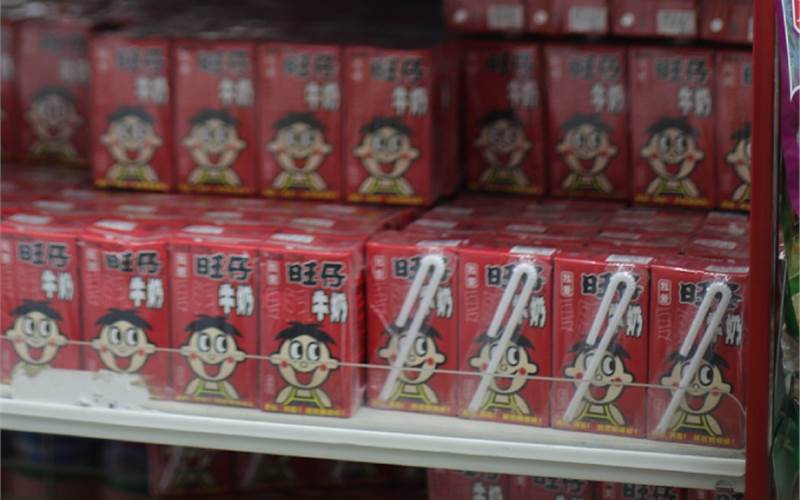Liquid packaging carton market to reach USD 12.01 billion by 2026
As per a Reportlinker study, the liquid packaging carton market valued at USD 10.03 billion in 2020 is expected to reach USD 12.01 billion by 2026 at a CAGR of 3.06% over the forecast period 2021-2026.
26 Jun 2021 | By WhatPackaging? Team
Three packaging formats dominate this market - brick type, gable-top, and tetrahedron cartons. The economic advantages of these cartons such as the inexpensive raw material have helped in the market’s growth.
In addition, cartons are collapsible, making them to take up minimal space during shipment. The cartons also make the product handling easier, provide a good surface for printing, and can be decorated to add aesthetic sales appeal to the product.
The demand for liquid paperboard is heavily dependent on the market segment of the liquid type, although there has been scope for new and emerging areas. A significant volume of liquid packaging carton consumption occurs in the dairy industry, with juice packaging accounting for a distant second in the market. Apart from milk and juices, liquid carton packaging is also being adopted for alcoholic beverage packaging. For instance, Dai Nippon Printing recently launched a liquid paper carton with a built-in spout that facilitates the long-term storage of alcoholic beverages at room temperature.
Besides this, several water brands are launching their products in liquid packaging cartons to drive sustainability. For instance, Fontsoria has launched its Agua en Caja Mejor brand in Pure-Pak cartons with plant-based renewable polymers from sugar cane. Just water uses liquid packaging cartons made with paper as the major component and caps made from sugarcane. The company Boxed Water also offers the boxed alternative in three sizes ranging from the 250 ml size to a full litre.
Amid the pandemic, beverage companies facing supply chain disruptions have reduced drink consumption. Though in-home consumption has increased, out-of-home product consumption, which generates the highest profit margins, has come to nearly a standstill, with market stagnation.
There may be several long-term changes in customer behaviour and demand. However, the key factors that affect the liquid packaging cartons market after the pandemic include the impact on each stage of its value chain including the workforce at an industrial level, raw material supply, and uncertain beverage demand at different outlets.

Milk cartons dominate the lqiuid packaging market
In terms of market share, milk is expected to dominate. Millennials find milk as a healthy and attractive option. And numerous research studies have demonstrated that milk offers health benefits, from combatting diabetes to optimising bone health and for healthy brain functioning. Paperboard is one of the commonly used materials for milk cartons.
In terms of sustainable offerings in this market segment, in 2019, Brownes Dairy announced plans to replace its existing milk cartons with a carton package made entirely from plant-based, renewable materials. Also, the Tetra Rex Bio-based package is a renewable carton, with its protective layers derived from sugar cane. The bio-based packages are more sustainable than standard milk cartons, reducing manufacturer reliance on fossil-based polyethylene plastic in the lining.
The report highlighted that these cartons are being adopted as an ideal option for packaging milk for retail distribution. Companies are increasingly adopting aseptic cartons and pouches for milk packaging. The organoleptic quality of aseptically processed UHT milk has significant benefits, in terms of lactulose, lactoserum proteins, and vitamin content, as compared to retort processing. Tetra Pak has been a keen adopter of aseptic packaging compared to retort in the beverage sector. And the company has been increasingly using an aseptic carton bottle for packaging milk.
Considering the competitive landscape, the rising partnerships, mergers, and acquisitions are predicted to supplement this industry’s growth in the coming years. The growing environmental concerns such as the overuse of plastic packaging, the recyclable nature of carton packs, and convenience over the use of glass packaging are some of the factors that will help boost the liquid packaging industry. Innovations in liquid packaging such as recycled paper and lightweight packaging are foreseen to be key enablers.
Asia-Pacific to witness the highest growth
The population of China and India dominates the Asia-Pacific market. These two countries are witnessing an increase in disposable income and a constant growth rate. According to the National Bureau of Statistics of China, cow’s milk production volume accounted for 32.01 million metric tonnes in 2019. And India is the most significant contributor to milk production globally, with its volume reaching 187.7 metric tonnes in 2019 compared to 176.3 metric tons in 2018. The report said that all these factors would supplement the growth of the liquid packaging carton market in the region.
In India, Amul sells 5% of its total milk in cartons. The dairy co-operative procures 26 million litres of milk daily. And even amid the pandemic, there is no foreseen shortage of milk. However, the packaging of milk in cartons is reportedly short with liquid carton manufacturing being halted temporarily. Tetra Pak India, which manufactures the packaging materials, had to stop operations after the induced lockdown. However, the company resumed operations once milk was listed as an essential commodity by the Union government, two days into the lockdown.
Click here to read the full report.












 See All
See All